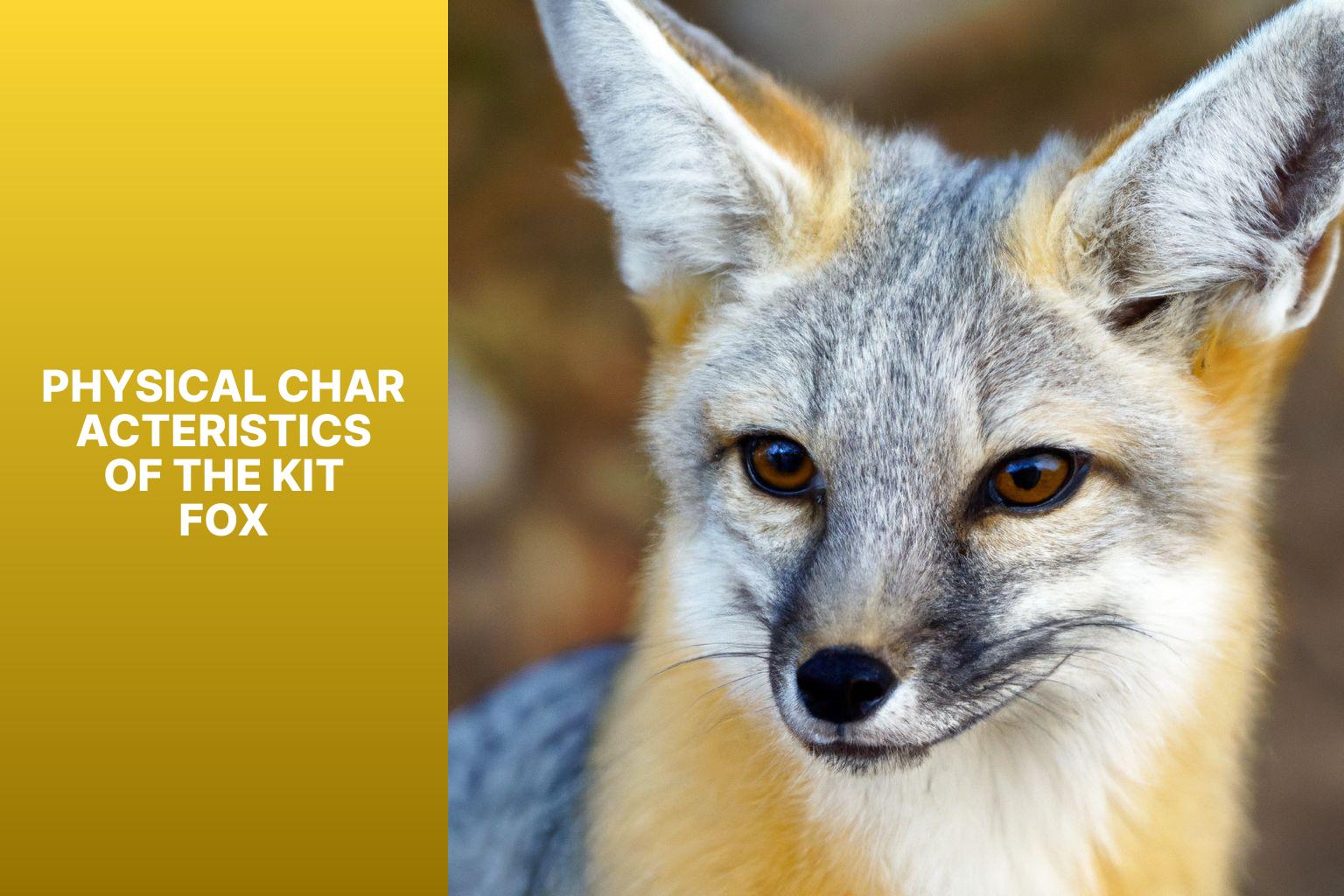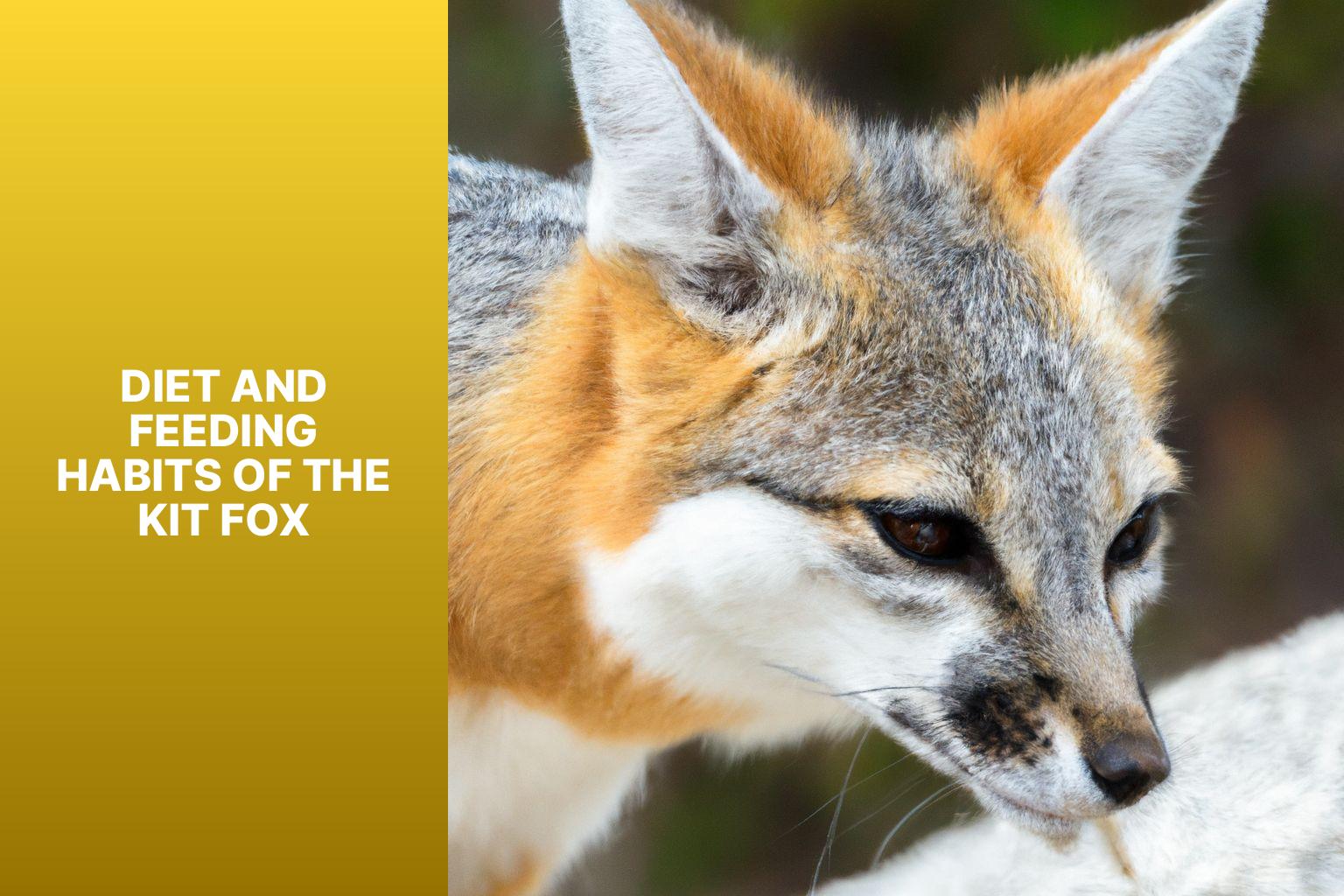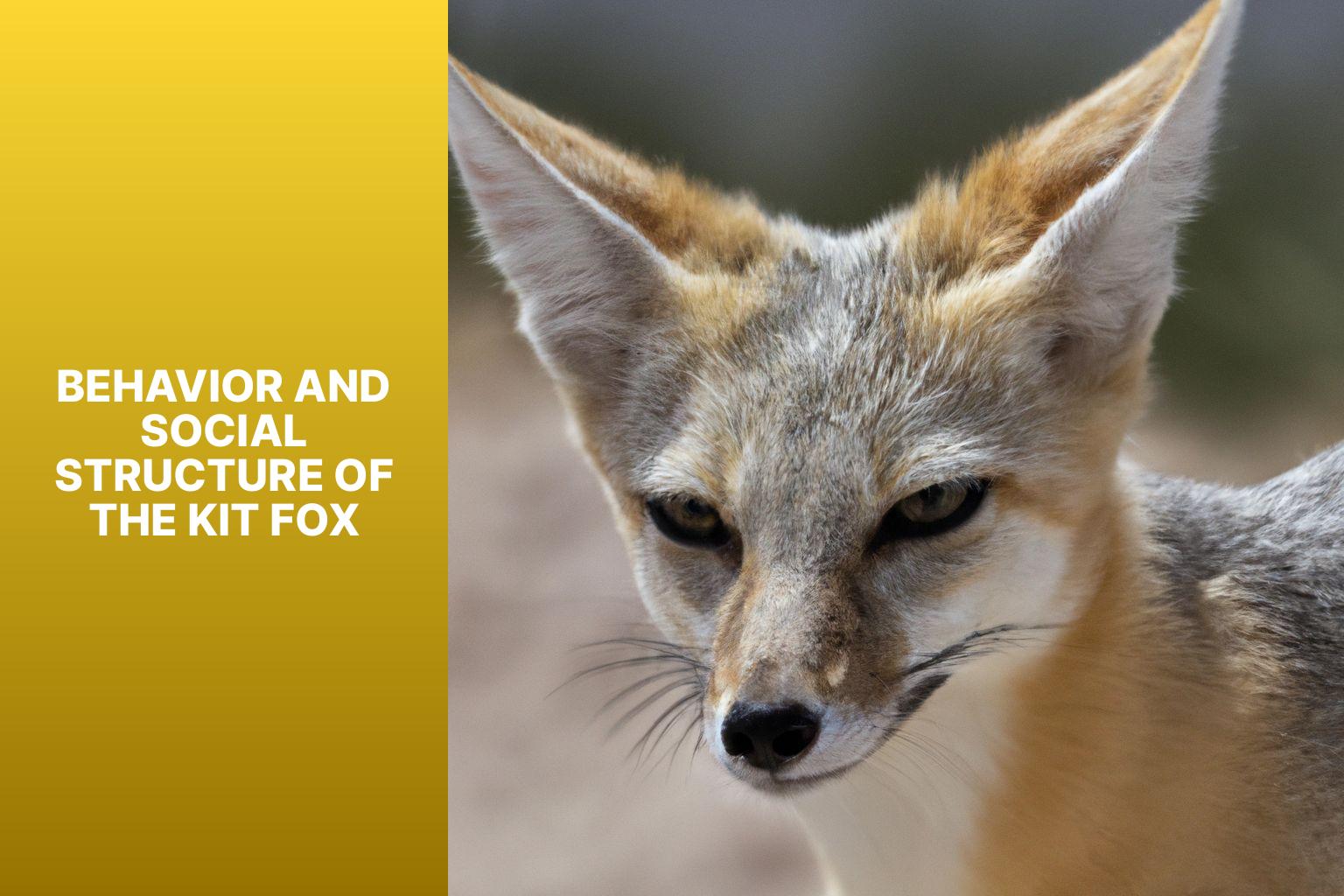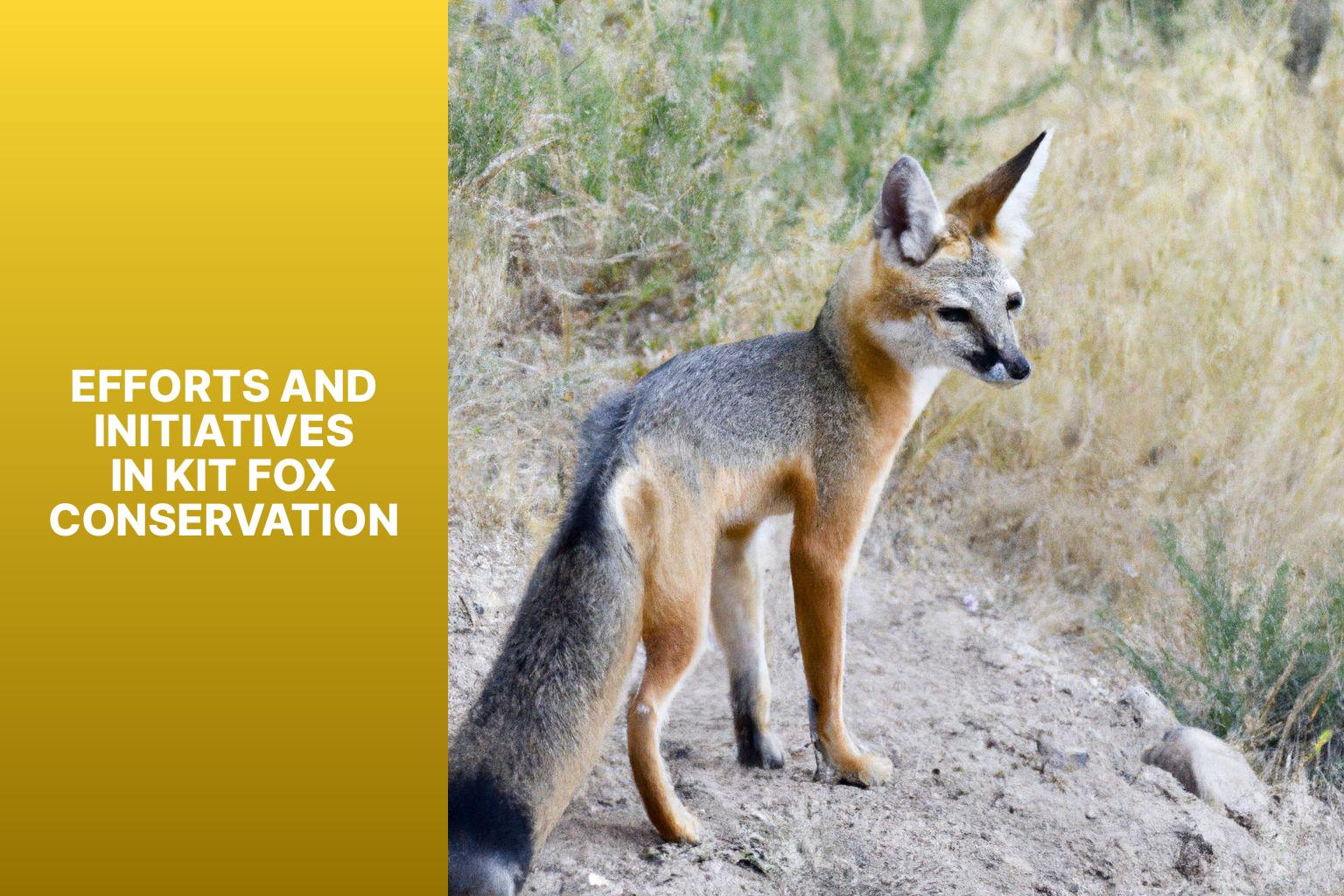The Kit Fox, scientifically known as Vulpes macrotis, is a small species of fox that belongs to the Canidae family. Found primarily in western North America, the Kit Fox is known for its unique physical characteristics, habitat preferences, and intriguing behaviors. This article aims to provide a comprehensive overview of the Kit Fox in zoology, discussing various aspects including its physical characteristics, habitat and distribution, diet and feeding habits, behavior and social structure, reproduction and life cycle, conservation status, threats and challenges, and efforts in conservation. readers will discover some interesting facts about this fascinating creature. By the end of this article, you will have a deeper understanding of the Kit Fox ecosystem and its significance within the realm of zoology.
Contents
- 1 Key takeaway:
- 2 Physical Characteristics of the Kit Fox
- 3 Habitat and Distribution of the Kit Fox
- 4 Diet and Feeding Habits of the Kit Fox
- 5 Behavior and Social Structure of the Kit Fox
- 6 Reproduction and Life Cycle of the Kit Fox
- 7 Conservation Status of the Kit Fox
- 8 Threats and Challenges Faced by the Kit Fox
- 9 Efforts and Initiatives in Kit Fox Conservation
- 10 Interesting Facts about the Kit Fox
- 11 Frequently Asked Questions
- 11.1 What is the kit fox and what makes it unique among fox species?
- 11.2 Where are kit foxes primarily found and what is their habitat preference?
- 11.3 What are the main characteristics of kit fox behavior?
- 11.4 What do kit foxes eat and how do they obtain their water?
- 11.5 What are the threats to kit foxes and their populations?
- 11.6 What is the conservation status of kit foxes?
Key takeaway:
- Kit Foxes have unique physical characteristics: Kit Foxes are small and have large ears and long tails, which help them to regulate body temperature and communicate with each other.
- Kit Foxes inhabit a specific habitat: Kit Foxes are found in deserts and other arid regions of southwestern North America. They have a limited distribution and are adapted to survive in these harsh environments.
- Kit Foxes are opportunistic feeders: Kit Foxes have a diverse diet, including small mammals, birds, insects, and fruits. They are adaptable and can adapt their feeding habits according to the availability of food.
Physical Characteristics of the Kit Fox

Photo Credits: Foxauthority.Com by Justin Harris
The kit fox is a small species of fox, measuring around 18-20 inches in length and standing approximately 12 inches tall at the shoulder. They typically weigh between 3-6 pounds.
Kit foxes have a dense, soft, and luxurious fur that is typically light gray or tan in color. Their fur helps to insulate them in both hot and cold climates.
One notable feature of the kit fox is its large ears, which can span up to 6 inches in length. These ears aid in their keen sense of hearing.
The kit fox has a long, bushy tail that can measure up to 12 inches in length. They use their tail for balance and communication.
Kit foxes have large, round eyes that are typically amber or yellow in color. Their eyesight is well-adapted for hunting in dim light conditions.
The kit fox has physical adaptations that help it thrive in its habitat, including large, strong claws for digging burrows, sharp teeth for capturing and consuming prey, and a streamlined body shape for efficient hunting and movement in open areas.
It is important to note that these physical characteristics can vary slightly among individual kit foxes and populations.
Habitat and Distribution of the Kit Fox
The kit fox, an adaptable small fox species, is found in diverse habitats such as deserts, grasslands, and shrublands in the southwestern United States and northern Mexico. This fox has evolved to survive in arid environments, enduring extreme temperatures and limited water availability.
Specifically, the kit fox is mainly found in California, Arizona, New Mexico, and Texas in the United States, as well as Sonora, Chihuahua, and Baja California in Mexico. Within these regions, it occupies distinct territories at varying elevations, ranging from sea level to higher mountain ranges.
Living in various soil and vegetation conditions, the kit fox is highly adaptable. It particularly favors sandy or gravelly soils for digging dens, which provide shelter from predators and extreme weather conditions. The fox utilizes abandoned burrows for nesting and rearing its young.
Human activities and habitat loss have significantly impacted kit fox populations. The development, urbanization, and expansion of agriculture have fragmented their habitats. To protect the remaining populations and ensure their survival, conservation efforts are crucial.
Researchers studying kit foxes in the Mojave Desert made an interesting discovery. They found that the foxes utilized man-made structures like underground pipes and culverts as temporary dens. This exemplified the adaptability of kit foxes to changing environments and their ability to utilize alternative resources. By tracking the foxes’ movements and their habitat preferences through these man-made dens, valuable insights into their behavior and distribution patterns were gained. This story underlines the resilience of the kit fox and its ability to adapt to landscapes altered by human activity.
Diet and Feeding Habits of the Kit Fox

Photo Credits: Foxauthority.Com by Eric Williams
The Kit Fox has a diverse diet and various feeding habits, which can be understood through the following table:
| Diet and Feeding Habits of the Kit Fox | |
| Diet of Kit Fox | Feeding Habits |
| Small mammals (rabbits, rodents, and hares) | Kit Foxes hunt mainly at night using their excellent hearing and sense of smell. They are skilled predators and are able to pounce on prey with precision due to their agility and speed. |
| Birds and reptiles | Kit Foxes are adaptable and opportunistic, taking advantage of available food sources in their habitat. They have been observed stalking and catching birds and lizards. |
| Fruits and vegetation | Although primarily carnivorous, Kit Foxes also consume fruits and vegetation. This dietary flexibility helps them survive in arid regions with limited food resources. They may eat fruits when available or rely on vegetation when prey is scarce. |
It is important to note that the Kit Fox’s diet and feeding habits can vary depending on factors like prey availability and the season. They are well-adapted to their desert habitat and have developed efficient hunting techniques to secure their meals. The Kit Fox’s versatility in diet, including small mammals, birds, reptiles, fruits, and vegetation, enables them to survive in their unique ecosystem.
Behavior and Social Structure of the Kit Fox

Photo Credits: Foxauthority.Com by Brian Allen
Behavior and Social Structure of the Kit Fox
The behavior and social structure of the kit fox is fascinating and unique. Here are some key aspects to consider:
1. Social Organization: Kit foxes live in small family groups called “packs.” These packs consist of a breeding pair, their offspring, and sometimes other related individuals.
2. Territoriality: Kit foxes are highly territorial and mark their territories with scent markings and vocalizations. They defend their home ranges against intruders.
3. Nocturnal Behavior: Kit foxes are mostly active at night to avoid extreme temperatures and predators.
4. Foraging and Diet: Kit foxes are opportunistic hunters and scavengers. They eat a diverse diet of small mammals, birds, reptiles, insects, and even fruits and vegetation.
5. Communication: Kit foxes use vocalizations and body postures to communicate. They have different calls for warnings, mating, and social bonding.
6. Family Bonding: Kit foxes have strong family bonds within their packs. They groom, play, and share food, which strengthens social ties and maintains cohesion.
Suggestions for observing kit fox behavior and social structure include:
- Visit areas where kit foxes inhabit, such as deserts or grasslands.
- Plan nighttime observations to witness their vibrant nocturnal activities.
- Bring binoculars or a camera with a zoom lens to observe them from a distance without disturbing them.
- Stay quiet and still to avoid scaring them away.
- Take notes or photographs to document their behavior and interactions.
Understanding the behavior and social structure of the kit fox helps us appreciate their unique adaptation to the environment and the importance of conserving their habitats.
Reproduction and Life Cycle of the Kit Fox
The kit fox has a fascinating reproduction and life cycle. Kit foxes become sexually mature at 10 months to 1 year old. Mating occurs from January to March, and the gestation period is about 51 to 53 days.
Female kit foxes usually have litters of 4 to 7 pups, but litter sizes can range from 1 to 11. The pups are born blind and helpless but develop quickly. They nurse for 4 to 5 weeks before starting to eat solid food.
After weaning, the pups start leaving the den and learn important skills from their parents. They learn to hunt and forage for rodents, reptiles, and insects. Kit foxes have strong social bonds within their family units and communicate through vocalizations and scent marking. As they grow, the young foxes become more independent and explore their territory. In the wild, kit foxes live for about 6 to 8 years.
The kit fox population is influenced by factors like food availability, habitat loss, and competition with other species. Changes in these factors can affect the reproduction and survival of kit foxes. Conservation efforts are crucial to protect the population and maintain a healthy ecosystem.
Researchers can use this knowledge of the kit fox’s reproduction and life cycle to address conservation needs and ensure the long-term survival of this unique species.
Conservation Status of the Kit Fox
The conservation status of the Kit Fox is of utmost importance in ensuring the survival of this species. Here are some crucial points to consider regarding the Conservation Status of the Kit Fox:
1. Population decline: The Kit Fox population has experienced a significant decrease due to factors such as Kit Fox Rescue Centers: Saving and Rehabilitating Endangered Kit Foxes, habitat loss, fragmentation, and human interference.
2. Habitat loss: Urbanization, agriculture, and industrial development have led to the destruction of the Kit Fox’s natural habitat, consequently affecting their ability to find shelter and access resources.
3. Fragmentation of populations: The construction of roads, fences, and barriers has disrupted the movement of Kit Foxes, resulting in reduced genetic diversity and an increase in inbreeding.
4. Human interference: Poaching, trapping, and pesticide usage directly pose threats to the Kit Fox, causing injury, mortality, and disturbance of their natural behavior.
5. Conservation efforts: Organizations and conservationists are actively engaged in undertaking measures to protect and restore the Kit Fox population through initiatives such as habitat restoration, breeding programs, and awareness campaigns.
To improve the conservation status of the Kit Fox, it is crucial to prioritize the preservation and restoration of their habitat, establish stringent regulations against human interference, and provide financial support for conservation initiatives. Raising public awareness about the significance of preserving this species and its ecosystem will contribute to long-term conservation efforts. Taking immediate action is vital in fostering a thriving population of Kit Foxes that play a critical role in our ecosystem.
Threats and Challenges Faced by the Kit Fox
The kit fox, a small fox species in North America, faces numerous threats and challenges in its habitat. These include habitat loss, competition with other predators, human activities, disease and parasites, and climate change.
1. Habitat Loss: The kit fox heavily relies on specific habitats such as desert grasslands and shrublands. Unfortunately, human development, including agriculture and urbanization, destroys and fragments these habitats. As a result, the kit fox’s shelter and prey are limited.
2. Competition with Other Predators: The kit fox finds itself in competition with larger predators such as coyotes and red foxes. They compete for resources such as food and territory, leading to reduced survival and reproduction rates for the kit fox.
3. Human Activities: The kit fox population faces threats from hunting, trapping, and vehicle collisions. Illegal trapping and vehicle collisions cause direct mortality, while hunting reduces the availability of prey and disrupts the social structure of the foxes.
4. Disease and Parasites: The kit fox is vulnerable to various diseases and parasites including rabies, distemper, and mange. These health issues can severely impact individual foxes and even lead to population declines.
5. Climate Change: Climate change significantly alters the kit fox’s habitat, affecting food availability and water sources. Extreme weather events and increased temperatures result in the loss of vegetation cover and restricted access to water, posing challenges for kit foxes in finding shelter and food.
Protecting the kit fox population necessitates efforts to mitigate habitat loss, manage predator populations, enforce regulations against illegal activities, and monitor and control diseases. Conservation initiatives should prioritize the preservation and restoration of the fox’s habitat, as well as promoting sustainable practices to minimize human impacts on the species.
Efforts and Initiatives in Kit Fox Conservation

Photo Credits: Foxauthority.Com by Bobby Sanchez
Efforts and Initiatives in Kit Fox Conservation
1. Habitat Preservation: Organizations and government agencies protect natural kit fox habitats by designating critical areas and managing land to promote population survival. They also enforce regulations to prevent predatory behavior.
2. Cross-Species Collaboration: Conservation efforts for kit foxes involve collaboration between scientists, wildlife biologists, landowners, and local communities. By working together, they develop effective conservation strategies that benefit both kit foxes and their ecosystems.
3. Population Monitoring: Scientists track and monitor kit fox populations using techniques like radio telemetry, camera trapping, and genetic analysis. This data helps assess population trends, identify threats, and guide kit fox scientific research.
4. Predator Control: Managing and controlling predator populations that threaten kit fox survival is essential. Non-lethal methods such as guardian animals and predator-free zones reduce predation on kit foxes.
5. Public Education and Outreach: Raising awareness about kit fox conservation is crucial. Education campaigns, workshops, and outreach programs teach people about the ecological role of kit foxes and how to coexist with them.
6. Disease Monitoring and Management: Kit foxes are vulnerable to diseases like canine distemper and sarcoptic mange. Monitoring disease outbreaks, implementing vaccination programs, and treating infected individuals prevent the spread of diseases and maintain healthy populations.
7. Conservation Breeding Programs: When kit fox populations are critically low, captive breeding programs are implemented. The goal is to breed and raise kit foxes in a controlled environment for reintroduction into the wild.
Interesting Facts about the Kit Fox
The kit fox (Vulpes macrotis) is an interesting creature in the animal kingdom. It is highly adapted to desert environments, with large ears that regulate its body temperature and enhance its ability to navigate in the dark. These ears also enable the kit fox to detect prey from a distance.
The role of Kit Foxes in wildlife ecology is important to understand. The kit fox is one of the smallest fox species, typically measuring 18-20 inches in length (excluding the tail). Its petite size allows it to navigate through tight spaces, making it an excellent hunter.
These foxes are opportunistic hunters with a diverse diet. They mainly feed on small mammals, such as rodents, rabbits, and insects. They also consume fruits and vegetation when prey is scarce.
Kit foxes are skilled diggers and create intricate burrow systems. These burrows serve as shelter from extreme temperatures, protection from predators, and nurseries for their young.
Although kit foxes are usually solitary creatures, they form monogamous pairs during the mating season, which occurs from December to February. They communicate through vocalizations and scent marking.
The kit fox is a species of conservation concern. The Diverse Kit Fox Species: Characteristics, Habitat, and Conservation and competition with other predators have caused their population numbers to decline in several regions. Efforts are being made to protect their habitats and ensure their survival.
The kit fox holds cultural significance for many Native American tribes, symbolizing intelligence, adaptability, and survival skills.
The table goes here if present.
Frequently Asked Questions
What is the kit fox and what makes it unique among fox species?
The kit fox, also known as Vulpes macrotis, is the smallest member of the Canidae family in North America. It is well adapted to the harsh desert habitat, with features such as long ears for heat radiation and great hearing, a grayish coat for camouflage, and a light and slim body with short legs for quick movements. Its distinctive feature is its large ears, which resemble those of the fennec fox.
Where are kit foxes primarily found and what is their habitat preference?
Kit foxes are primarily found in the southwestern part of the United States and northern and central Mexico. They inhabit arid and semi-arid regions such as desert scrub, chaparral, and grasslands. They prefer areas with sparse ground cover and loose textured soils for denning.
What are the main characteristics of kit fox behavior?
Kit foxes are primarily active during the cool night and twilight periods. They are primarily nocturnal and crepuscular, meaning they are active during the night and twilight periods. They are relatively inactive during hot desert days and take refuge in burrow systems during the day to escape extreme temperatures and predators. Kit foxes are also efficient in water usage and obtain most of their hydration from the food they consume.
What do kit foxes eat and how do they obtain their water?
Kit foxes are primarily carnivores, eating rodents and rabbits, but will also eat fruits, carrion, insects, lizards, snakes, and ground-dwelling birds if food is scarce. They obtain most of their hydration from the food they consume and are efficient in water usage.
What are the threats to kit foxes and their populations?
Kit foxes face threats such as habitat loss due to grazing, urbanization, agriculture, and large-scale industrial energy development. They are also threatened by mortality from vehicles and off-road vehicles that can cause cave-ins and crush kit fox pups. Other threats include climate change and the potential spread of diseases like canine distemper.
What is the conservation status of kit foxes?
Kit foxes are currently listed as Least Concern on the IUCN Red List, but their population numbers are decreasing. Efforts are underway to protect the endangered San Joaquin kit fox and its habitat. The U.S. Fish and Wildlife Service and the International Union for the Conservation of Nature are involved in conservation efforts to ensure the survival of kit fox populations.


